
 At a new solar field installation in North Florida, there were areas of bad soil where the H piles were not passing the loading and pull testing. Solar panels lay at an angle, and if a strong wind is coming from one direction, it can try to “lift” the panel and pile. Conversely, a strong wind coming from the opposite direction creates a downward force and can drive the supporting pile into the soil.
At a new solar field installation in North Florida, there were areas of bad soil where the H piles were not passing the loading and pull testing. Solar panels lay at an angle, and if a strong wind is coming from one direction, it can try to “lift” the panel and pile. Conversely, a strong wind coming from the opposite direction creates a downward force and can drive the supporting pile into the soil.
Powerful Polymers
The general contractor contacted the grouting specialists at Stable Soils and asked if they could use cement grout to try and lock the piles into place. Because of the tight confines between rows of piles, the specialist suggested a polyurethane permeation grout, Alchatek's AP Soil 600. The required installation equipment is more compact and it is a lot cleaner to install than cement. AP Soil 600 is moisture-activated (the same as Gorilla Glue), but it only takes about 5% moisture in the soil to make it react. AP Soil 600 is heavier than water by design, and it is also hydrophobic. As it soaks in, it pushes through the moisture and displaces it. Once it cures, the sand is locked together. As the AP Soil 600 soaks into the damp sand, it reacts and produces carbon dioxide. The CO² creates a swelling effect, driving the resin further into the sandy soil.
Painless Procedures
Around 20 test piles were installed at the solar field. AP Soil 600 was injected right against the steel at a depth between 3 and 4 feet. About 1/3 of the piles received 1-1/2 gallons. Another third received 1 gallon, and the final third was injected with 3/4 of a gallon. All of the piles passed the pull testing and compression testing. The project was awarded, and around 4000 piles were injected in total. It was a complete success.
Fast forward to 2022 at a massive solar field installation in Ft. Green, Florida. Like many solar fields, it was not necessarily on the best land. The site was a filled-in phosphate mine, so the soil was layered with bands of clay, sand, and mine tailings. Once again, there were sections of the solar field where the piles were not passing the pull testing, load testing, and lateral testing.
Polyurethane grouting was proposed but the manufacturer of the components wanted the proposed material to go through more vetting. Primarily they wanted to know if the polyurethane grout would last for the 25-year service lifespan of the solar field. Job histories, accelerated testing results, and chemical resistance data was provided, to their satisfaction.
For this project, the owners wanted to get engineers involved in the grouting portion of the installation. Mathers Engineering was in charge, and they contracted Madrid Engineering to handle the soil testing. Testing showed that there were layers of clay and sand (referred to as zebra striping), so the grout was targeted in the sandy areas. The thought was that the permeated sand would be locked in between layers of clay, thus improving both compression and pull strength.
For this installation, the same three different volumes of AP Soil 600 were tested. Once again, only 3/4 of a gallon was deemed sufficient to pass the testing, so that was what was used. 5000 piles were injected on this project, about 90% of them with AP Soil 600. There were some areas of organic soils, and for those, AP Fill 700 was injected and tested successfully. AP Fill 700 has over 30X expansion and works well at improving organic soils. The work was completed in the Spring of 2022, and the solar field went into service.
Rapid Results
In the Fall of 2022, disaster struck Ft. Green, a location unfortunately positioned directly in the path of a Category 3 hurricane. The storm’s ferocity was evident as it swept through, leaving behind a trail of destruction in its wake. Trees were toppled, and the solar field, designed to endure winds exceeding 100 MPH, faced unprecedented damage. The wind from the hurricane’s eyewall proved too powerful, driving piles of solar panels into the ground. Despite their robust design, many panels were shredded, and a significant number of the piles suffered movement, highlighting the sheer force of nature’s fury.
Out of 5000 piles injected, only 9 showed any sign of movement. The polyurethane grout was put to the test and passed with flying colors. Currently, this field is going through the insurance claim process, but the testing for the repair method has already been completed. The embedded piles were jacked back up to level and then grouted in place with AP Soil 600. All of them passed the test; now, the field is waiting for the insurance to be worked out so the rest of the damaged piles can be glued back into place. AP Soil 600 carries the NSF / ANSI 61 rating. It is safe for contact with potable water, and in this application, it will not leach any chemicals into the soil or groundwater.





 Manhole infiltration can pose serious risks to nearby structures. In a recent case, water infiltration pulled soil into a manhole, eroded the ground beneath a walkway in front of a residence, and threatened to compromise the home's foundation. Specialists from
Manhole infiltration can pose serious risks to nearby structures. In a recent case, water infiltration pulled soil into a manhole, eroded the ground beneath a walkway in front of a residence, and threatened to compromise the home's foundation. Specialists from 


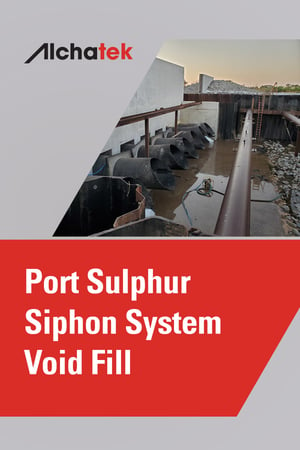 The Army Corp of Engineers (ACOE) builds and manages numerous projects along the rivers and waterways of the United States. On our mightiest river, the Mississippi, the ACOE was tasked with upgrading the large siphon systems that are used to draw down the river level during flood events. To prevent catastrophic flood damage, these siphons kick on if the river is going to crest over the top of the levees.
The Army Corp of Engineers (ACOE) builds and manages numerous projects along the rivers and waterways of the United States. On our mightiest river, the Mississippi, the ACOE was tasked with upgrading the large siphon systems that are used to draw down the river level during flood events. To prevent catastrophic flood damage, these siphons kick on if the river is going to crest over the top of the levees.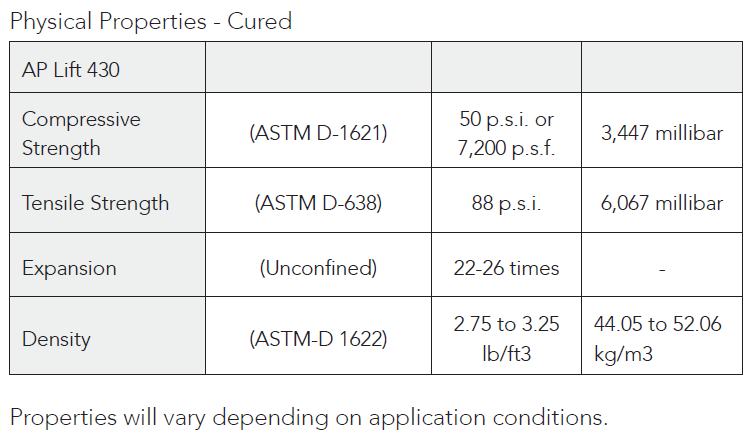





 Polyurethane foam can be used in a variety of new construction projects, from road widening to zero lot line excavation projects to a variety of complex excavation and foundation support scenarios. The use of polyurethane stabilization techniques provides clear advantages like cost-effectiveness, strength, and versatility across a wide range of situations. However, properly implementing them requires extensive technical expertise in assessing site conditions, selecting the right materials, and creating effective injection plans.
Polyurethane foam can be used in a variety of new construction projects, from road widening to zero lot line excavation projects to a variety of complex excavation and foundation support scenarios. The use of polyurethane stabilization techniques provides clear advantages like cost-effectiveness, strength, and versatility across a wide range of situations. However, properly implementing them requires extensive technical expertise in assessing site conditions, selecting the right materials, and creating effective injection plans.
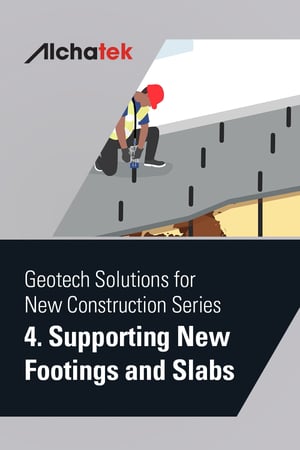 In new construction projects, establishing a solid foundation for footings and slabs is crucial, especially in challenging soil conditions. Polyurethane foam offers a groundbreaking approach to improving soil stability, a key factor in the longevity and safety of new structures.
In new construction projects, establishing a solid foundation for footings and slabs is crucial, especially in challenging soil conditions. Polyurethane foam offers a groundbreaking approach to improving soil stability, a key factor in the longevity and safety of new structures.
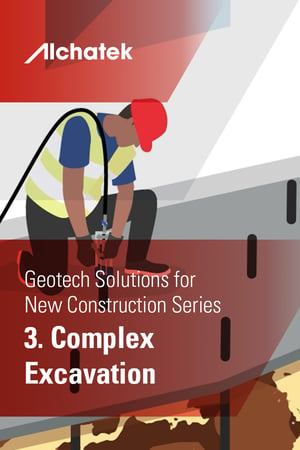 As construction excavation projects continue to push the boundaries of complexity, innovative solutions are needed to ensure safety and stability. Polyurethane foam has emerged as an indispensable tool for these unique challenges. With a dual capability to stabilize soil and complement traditional retaining methods like sheet piling or secant walls, polyurethane foam provides robust support precisely when and where it is most needed. Whether plugging gaps to prevent infiltration, enhancing structural support, or sealing out soil in deep foundation pits, this versatile material enables advanced excavations that would otherwise be extremely risky if not impossible.
As construction excavation projects continue to push the boundaries of complexity, innovative solutions are needed to ensure safety and stability. Polyurethane foam has emerged as an indispensable tool for these unique challenges. With a dual capability to stabilize soil and complement traditional retaining methods like sheet piling or secant walls, polyurethane foam provides robust support precisely when and where it is most needed. Whether plugging gaps to prevent infiltration, enhancing structural support, or sealing out soil in deep foundation pits, this versatile material enables advanced excavations that would otherwise be extremely risky if not impossible.
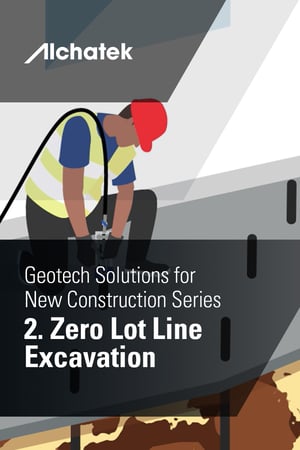 Excavating near existing structures, particularly in zero lot line scenarios like building additions, poses unique challenges. Traditional methods like sheet piling, while effective, can cause issues such as adjacent structure disruption, soil settlement, and excessive noise, making them less ideal in dense, urban environments.
Excavating near existing structures, particularly in zero lot line scenarios like building additions, poses unique challenges. Traditional methods like sheet piling, while effective, can cause issues such as adjacent structure disruption, soil settlement, and excessive noise, making them less ideal in dense, urban environments.
 Road widening projects, essential for improving traffic flow and infrastructure, traditionally involve digging up and replacing unstable soil. This method, however, poses risks to existing roads and is both costly and time-consuming. The use of polyurethane foam to stabilize existing soil is often more efficient and effective.
Road widening projects, essential for improving traffic flow and infrastructure, traditionally involve digging up and replacing unstable soil. This method, however, poses risks to existing roads and is both costly and time-consuming. The use of polyurethane foam to stabilize existing soil is often more efficient and effective.